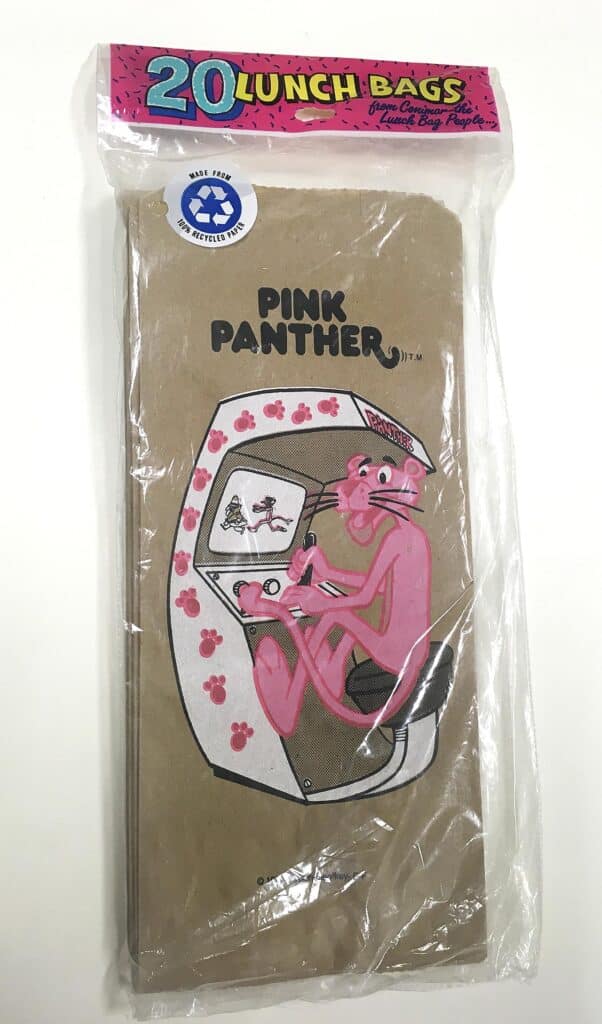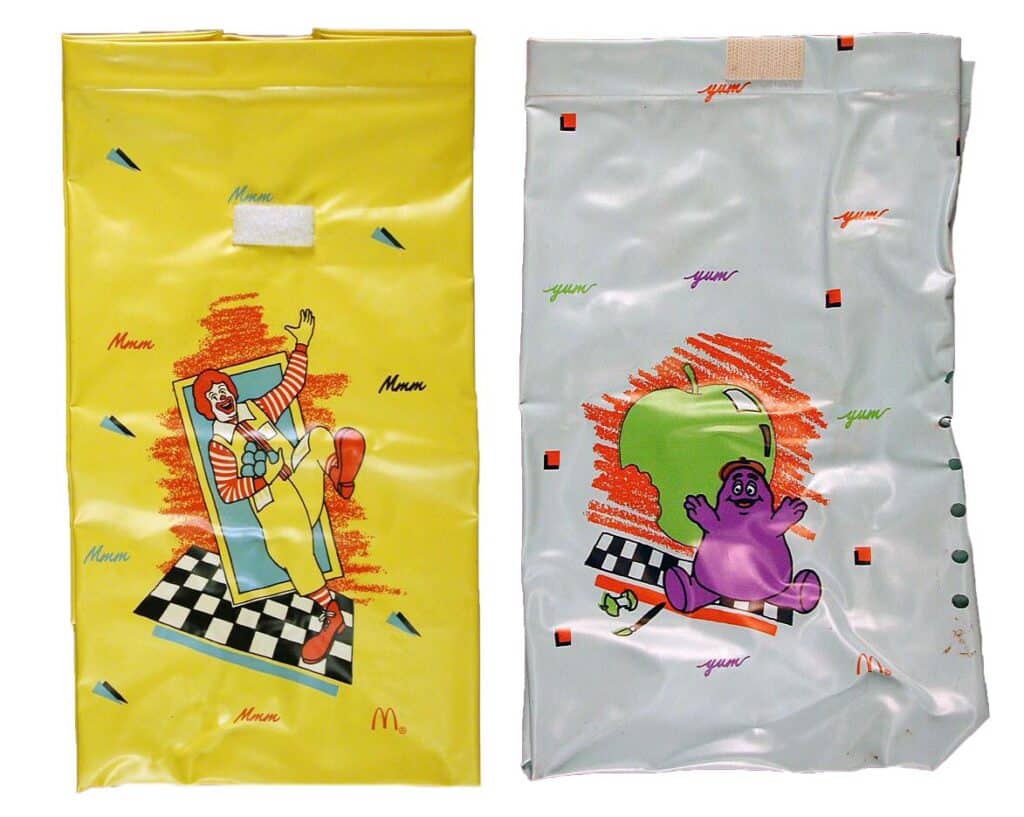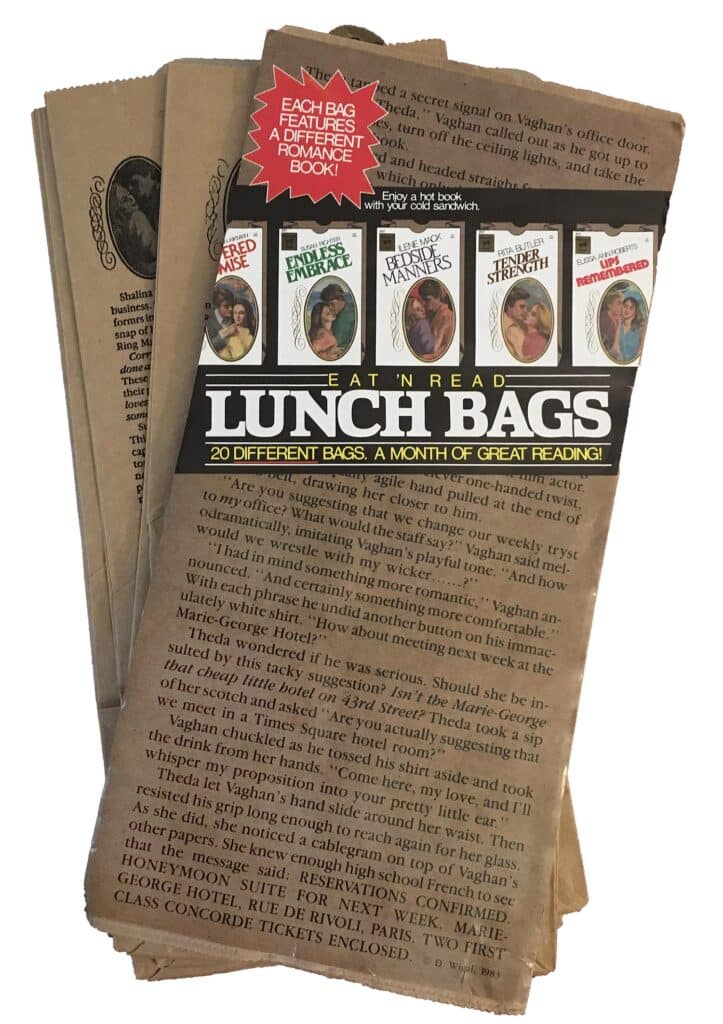
One of my favorite recent museum acquisitions is a package of 1990s Pink Panther lunch bags. The infamous animated character is playing Panther, an adorable, make-believe arcade game starring himself. At The Strong, we preserve obvious commercial playthings like arcade cabinets and game cartridges, but we also acquire playful artifacts and play-related materials that can assist in contextualizing play in a specific period. As the research historian, I think the artifact helps us capture how video games permeate everyday spaces in the United States’ culture. These bags were created in 1994, a particularly contentious time in U.S. video game history when the government and industry argued over the claim that games were a violent influence on youth. And it is a specific illustration of how existing media properties embrace video game culture to appeal to a young demographic. On a personal level, the artifact also reminds me of how a ubiquitous brown paper bag became a plaything in my own childhood.

It may be easier to visually understand how some lunch bags can be playful, such as these soft vinyl McDonalds lunch bag artifacts in The Strong’s collections. They are part of McDonalds’ character branding in the 1980s and the broader Happy Meal premium toy culture. But how can a pack of plain, store-bought paper bags be playful? Not to be mistaken for the brown bag, the paper lunch bag is often treated as the backup plan when its fancier counterpart—the metal or plastic lunch box—has not been washed in time for school or the workday. The colorful branding and patterns of traditional lunch boxes and fabric bags might serve as an extension of our personality or our favorite fandom; the brown paper bag is the epitome of WYSIWYG—what you see is what you get.
Despite the bad rap, however, the paper bag served as the unsung hero of otherwise boring lunches in my memories. During elementary school, a paper bag could turn into a makeshift basketball hoop to throw balled up napkins. A crumpled-up bag served as the perfect oversized ball for two-fingered soccer on the lunch tables. If we had a pen or pencil, the bag became the place for doodles or a quick playing surface for tic-tac-toe or MASH. Beyond lunches, paper bags had starring roles in countless puppet shows, thanks to my frugally minded teachers and parents. Many early birthday parties relied on these small bags to hold the party favor tchotchkes and treats—cute erasers, holographic pencils, candies, and even bookmarks, if we were lucky.

Even for adults, the paper bag could become something more than just a holder of their midday food break. These 1980s lunch bags featuring snippets of classic Harlequin romance novels reimagine the paper bag—and lunch time—as an imaginative escape. The company also created ones with almanac facts and humorous, real-life personal ads from various newspapers, anything to help turn a humdrum workday lunch into a fun time.
What other household objects become playthings with a little bit of imagination and ingenuity? However ordinary at first glance, everyday artifacts like the simple lunch bag can remind us that play stories come in all shapes and sizes at The Strong.



